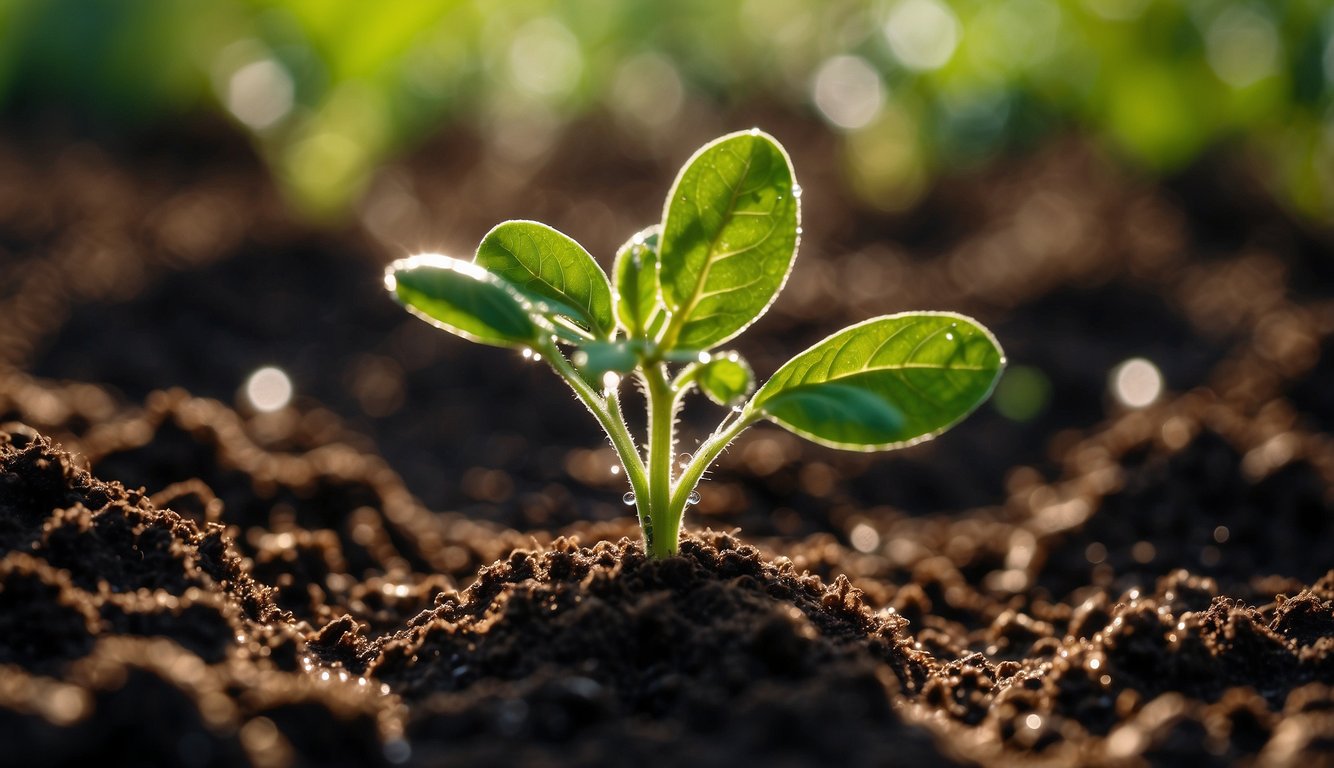TheHerbProf.com is a treasure trove of knowledge for those interested in natural healing and herbal remedies. The website is run by Paul Johnston MD. A naturopathic who has not only received extensive education in the field but also has personal experience in self-healing.
Tomatoes are a popular fruit that are used in a variety of dishes and cuisines around the world. However, have you ever cut open a tomato and found tomato sprouting inside? This phenomenon is known as vivipary, and it can be a surprising and confusing discovery for many people.
Vivipary occurs when the seeds inside a tomato begin to germinate while still inside the fruit. This can happen for a variety of reasons, including over-ripeness, exposure to cold temperatures, or a lack of the hormone abscisic acid which is responsible for seed dormancy. While it may seem strange, sprouting seeds inside a tomato are not harmful to eat and can be consumed along with the rest of the fruit.
In this article, I will explore the topic of tomato sprouting inside in more detail, including why it happens, whether it is safe to eat, and what you can do to prevent it from happening in your own tomato plants. By the end of this article, you will have a better understanding of this natural phenomenon and be able to enjoy your tomatoes without any confusion or concern.
Understanding Tomato Vivipary
As a gardener, I have come across tomatoes that have sprouted inside. This phenomenon is called vivipary, which is the germination of seeds while still inside the fruit. Vivipary is not a disease, but rather a natural process that occurs when the hormone controlling seed dormancy is exhausted or runs out, allowing the seed to grow in the moist environment inside the fruit.
Causes of Vivipary
According to my research, there are several factors that can cause vivipary in tomatoes. One of the main causes is temperature. When tomatoes are exposed to prolonged cold temperatures, below 55 degrees Fahrenheit, and then left in a warm place, the seeds inside the tomato are more likely to sprout. Other factors that contribute to vivipary include moisture, light, and overripe fruit.
The hormone that controls seed dormancy is called abscisic acid, and when it is depleted, the seed can start to germinate. The warm, moist environment inside the fruit is perfect for germinating seeds to grow.
Vivipary as a Disease
Vivipary is not a disease, but rather a natural process that can occur in tomatoes. It is important to note that while sprouted tomatoes are safe to eat, they may not taste as good as non-sprouted tomatoes. In addition, sprouted seeds may not grow into healthy plants, as they have already used up some of their energy reserves during the sprouting process.
Vivipary is a natural process that can occur in tomatoes when the right conditions are present. While it is not harmful, it may affect the taste of the tomato and the viability of the seeds for planting. It is important to understand the causes of vivipary to prevent it from happening in the future.
Appearance of Vivipary in Tomatoes
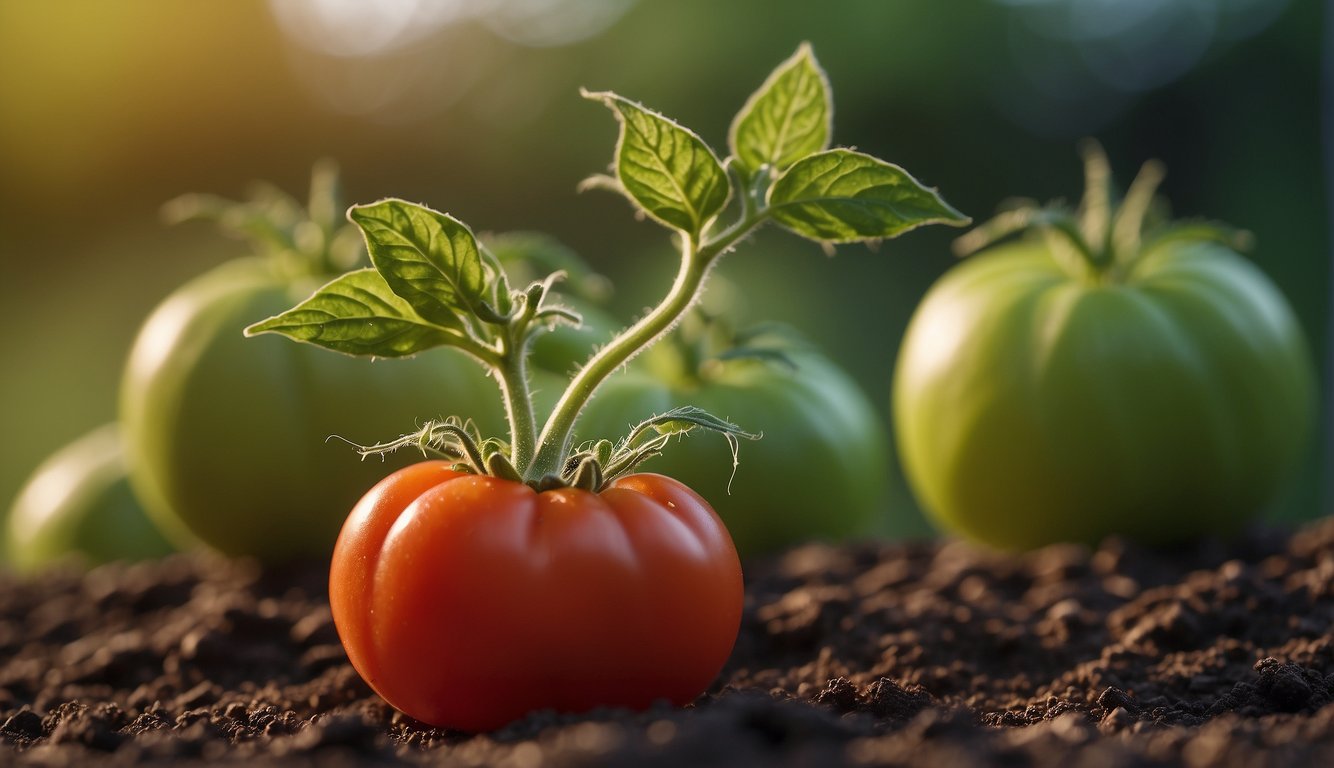
When it comes to tomatoes, vivipary is a natural process that occurs when the seeds inside the fruit start germinating while still attached to the parent plant. This phenomenon is also known as “premature germination” and it results in tomato seeds sprouting inside the fruit.
At first glance, many people assume these are worms or some kind of pest. However, usually upon closer inspection, these stringy, squiggly formations will actually turn out to be seeds sprouting inside a tomato fruit. Vivipary in tomatoes is not a very common occurrence, but it can happen when the conditions are right.
What Are The Most Common Causes?
The most common cause of vivipary in tomatoes is overripe fruit. As tomatoes become overripe, they produce ethylene gas which triggers the seeds inside to start germinating. This process is accelerated in warm, moist environments, which is why vivipary is more common in humid regions.
If you notice seeds sprouting inside your tomatoes, it’s perfectly safe to eat them. However, the taste and texture may be affected. The sprouted seeds may also affect the shelf life of the fruit, so it’s best to use them as soon as possible.
To prevent vivipary in your tomatoes, it’s important to harvest them before they become overripe. You can also store them in a cool, dry place to slow down the ripening process. Additionally, proper ventilation and air circulation can help reduce the humidity levels in your tomato plants, which can also help prevent premature germination of seeds.
Vivipary in tomatoes is a natural process that occurs when the seeds inside the fruit start germinating while still attached to the parent plant. It’s caused by overripe fruit and can be prevented by harvesting tomatoes before they become overripe, storing them in a cool, dry place, and ensuring proper ventilation and air circulation in your tomato plants.
Safety Concerns of Sprouting Fruits
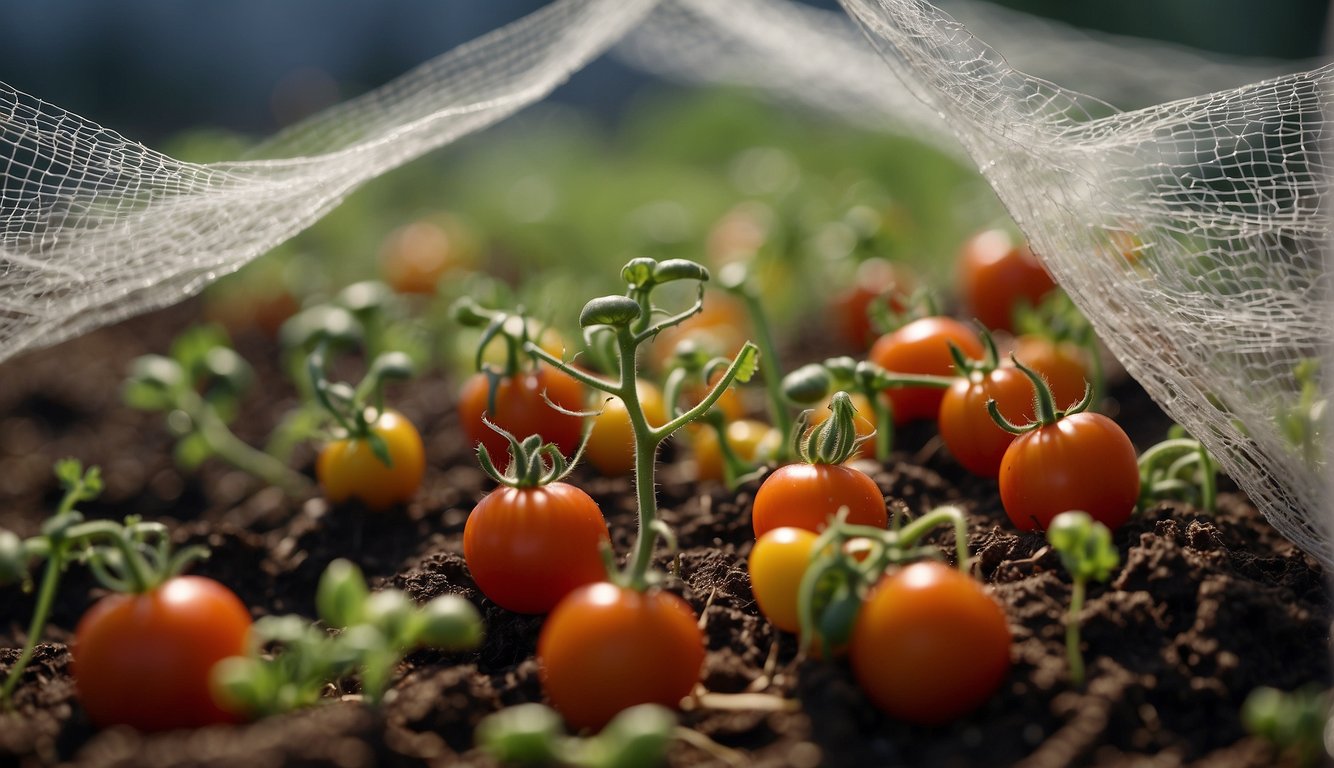
As a tomato enthusiast, I have encountered sprouting tomatoes a few times. It’s an interesting occurrence that can leave one wondering if it’s safe to eat. In this section, I will explore the safety concerns of sprouting fruits, specifically tomatoes, and answer the question, “Are sprouting tomatoes edible?”
Are Sprouting Tomatoes Edible?
The good news is that sprouting tomatoes are safe to eat as long as they are not overripe or mushy. According to Chefs Resource, sprouted tomatoes are safe to consume if the sprouts are healthy and firm. However, if the sprouts are mushy or rotting, it’s best to discard the tomato.
It’s important to note that sprouting fruits, including tomatoes, are not a sign of spoilage. Instead, it’s a natural occurrence that happens when the natural protections within the fruit are no longer sufficient to maintain seed dormancy. As Empress of Dirt notes, this phenomenon is called vivipary.
In some cases, sprouting fruits can be a good thing. For example, if you are looking to grow more plants, you can use the sprouted seeds to do so. Additionally, sprouted seeds can have health benefits, including increased nutrient content and improved digestibility.
In summary, sprouting tomatoes are safe to eat as long as the sprouts are healthy and firm. Sprouting fruits, in general, are not a sign of spoilage and can have health benefits. However, if the sprouts are mushy or rotting, it’s best to discard the fruit.
Planting New Plants from Sprouting Fruits
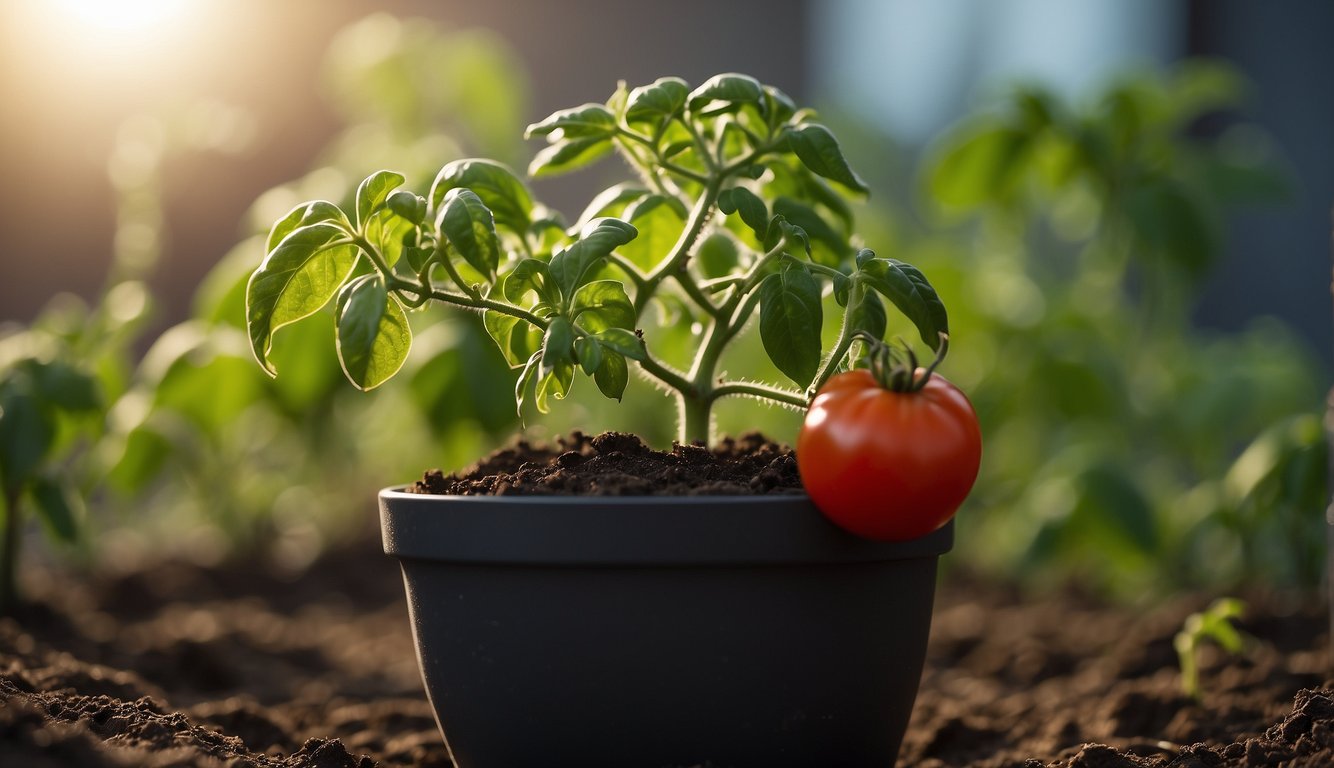
As a gardener, I am always looking for ways to grow my own plants and vegetables. One interesting way to do this is by planting new plants from sprouting fruits. In particular, tomato plants can be grown from the seeds that sprout inside the fruit.
To get started, I need to select a healthy, ripe tomato from which to extract the seeds. I can then cut the tomato in half and gently squeeze out the seeds onto a paper towel. I should allow the seeds to dry completely before planting them.
Once the seeds are dry, I can plant them in potting soil. I should plant them about 1/4 inch deep and cover them lightly with soil. I should then water the soil well and place the pot in a warm, sunny location.
As the seedlings begin to grow, I need to make sure they are getting enough water and sunlight. Once they have grown to a suitable size, I can transplant them into my garden or into larger pots.
Growing my own tomato plants from sprouting fruits is a fun and rewarding way to enjoy fresh, homegrown tomatoes. It also allows me to save money and reduce waste by reusing the seeds from the parent plant.
Prevention of Vivipary in Tomatoes
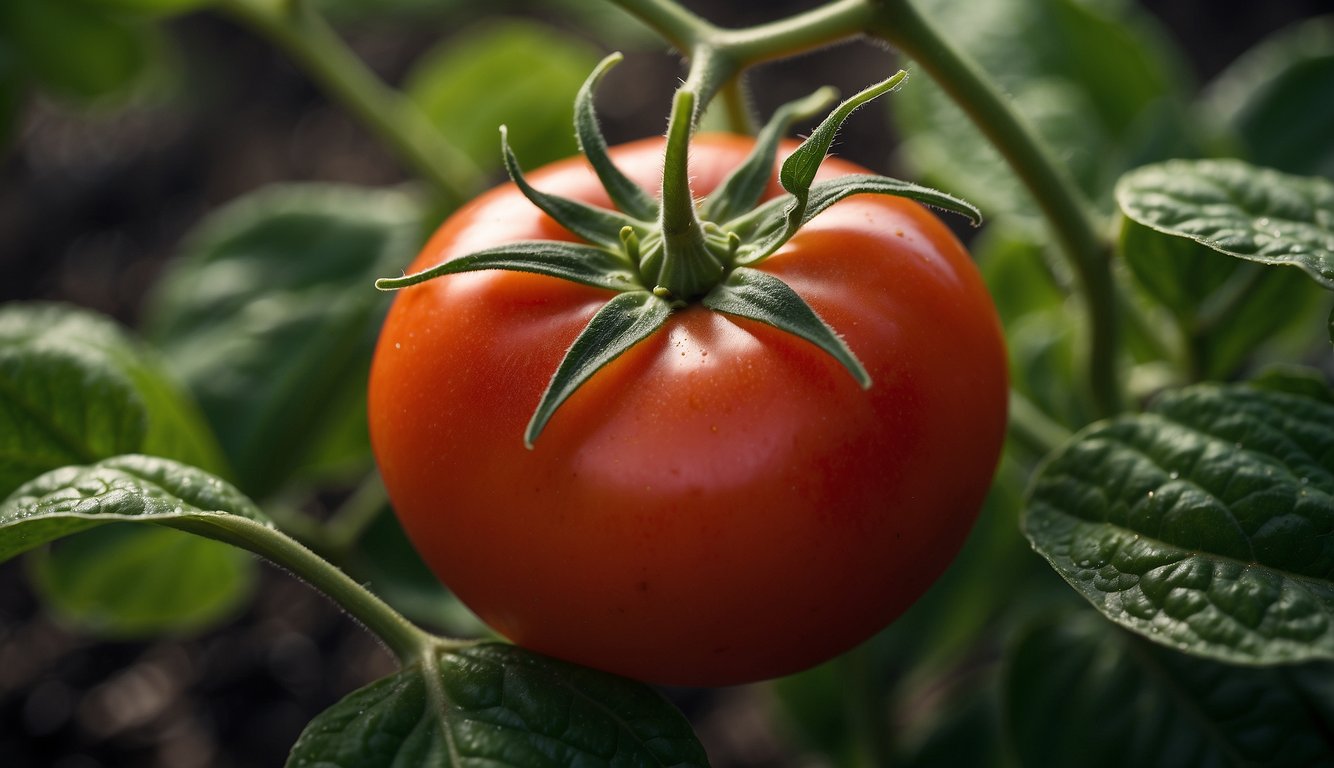
As we have learned, vivipary in tomatoes can be caused by various factors such as over-ripening, hormonal changes, and moist environments. However, there are several measures we can take to prevent tomato seeds from sprouting inside the fruit.
One effective method is to properly store tomatoes. Tomatoes should be kept at room temperature until they are fully ripe. Once they are ripe, they should be eaten or refrigerated to prolong their shelf life. Refrigerating tomatoes can help prevent them from over-ripening and can also slow down the hormonal changes that lead to vivipary. However, it is important to note that storing tomatoes in prolonged cold temperatures, such as in the refrigerator, can also result in the loss of flavor and texture.
Another way to prevent vivipary is to avoid storing tomatoes with other fruits and vegetables that produce ethylene gas. Ethylene gas can cause tomatoes to ripen and over-ripen quickly, which can lead to vivipary. Therefore, it is best to store tomatoes separately from other produce.
It is also important to harvest tomatoes at the right time. Tomatoes should be harvested when they are fully mature but not over-ripe. Over-ripe tomatoes are more likely to experience hormonal changes that can lead to vivipary.
In summary, preventing vivipary in tomatoes requires proper storage, harvesting at the right time, and avoiding exposure to ethylene gas. By following these simple steps, we can enjoy fresh and delicious tomatoes without the risk of sprouting seeds inside.
Before You Go – Tomato Sprouting Inside
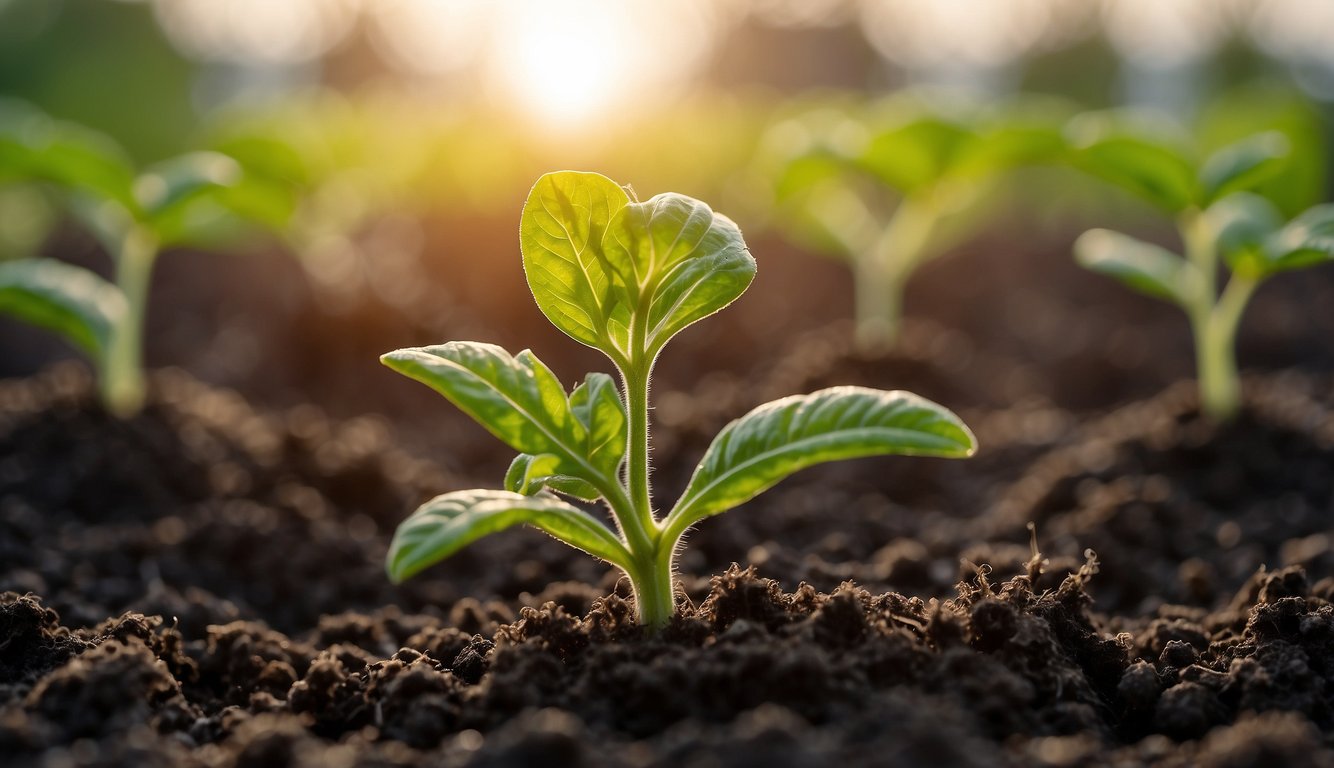
Tomato sprouting inside is a natural phenomenon that occurs when certain conditions are met. As we have seen, the seeds inside a tomato are more likely to sprout if the tomato is exposed to prolonged cold (for about 3-4 days and below 55 degrees Fahrenheit) and then left in a warm place. Additionally, some other factors like the moist and nutrient-rich environment inside the tomato provide an ideal setting for germination to take place [1].
Understanding the life cycle of a tomato plant is important when it comes to harvesting and maturity. Tomatoes are typically harvested when they are fully ripe, which is when they have reached their maximum size and have developed their full flavor. The maturity of a tomato can be determined by its color, which changes from green to red as it ripens [2].
The Latin name for the tomato plant is Solanum lycopersicum, and it is a member of the nightshade family. Tomatoes are a popular vegetable that is grown in many different regions around the world. They are known for their sweet and tangy flavor, and they are used in a variety of dishes, including salads, sauces, and soups [3].
Don’t Forget The Sunlight!
Tomatoes require a lot of sunlight to grow, and they are typically grown in warm climates. In the United States, the USDA has designated several regions as major tomato-growing areas, including California, Florida, and the Southeast [4].
If you encounter a tomato with sprouting seeds, there is no need to worry. The tomato is still safe to eat, and the sprouted seeds can be removed if desired. However, it is important to note that tomatoes with sprouting seeds may not last as long as those without, so it is best to use them as soon as possible [1].
In summary, tomato sprouting inside is a natural occurrence that is influenced by several factors. It is important to understand the life cycle of a tomato plant, as well as its Latin name, flavor, and sunlight requirements. While a tomato with sprouting seeds is safe to eat, it is best to use it as soon as possible.
References – Tomato Sprouting Inside
Little Herb Encyclopedia, by Jack Ritchason; N.D., Woodland Publishing Incorporated, 1995
The Ultimate Healing System, Course Manual, Copyright 1985, Don Lepore
Planetary Herbology, Michael Tierra, C.A., N.D., Lotus Press, 1988
Handbook of Medicinal Herbs, by James A. Duke, Pub. CRP Second Edition 2007
The Complete Medicinal Herbal, by Penelope Ody, Published by Dorling Kindersley
Check the Following Articles!
How to Trim Pothos: A Step-by-Step Guide
Gardening in Buckets: A Guide to Container Gardening
Carrots Growing Sprouts: Tips for Successful Germination
Frequently Asked Questions – Tomato Sprouting Inside

Are tomatoes with internal sprouts safe for consumption?
Tomatoes with internal sprouts are safe for consumption. According to Hunker, the sprouts found inside a tomato are not harmful and can be eaten. However, the sprouts may affect the texture and taste of the tomato.
What steps should be taken to plant a tomato that has begun sprouting inside?
To plant a tomato that has begun sprouting inside, gently remove the sprouted seeds from the tomato and plant them in soil. According to Better Homes & Gardens, fill a container with seed-starting mix, add the sprouted seeds, and cover them with a little more mix. Keep the soil moist and place the container in a warm, sunny spot.
What is the phenomenon of tomatoes sprouting internally called?
The phenomenon of tomatoes sprouting internally is called vivipary. According to UConn Extension News, vivipary is a natural process that occurs when seeds begin to germinate while still inside the fruit.
Can the seeds from a tomato that has sprouted internally be planted?
Yes, the seeds from a tomato that has sprouted internally can be planted. According to Vegetable Gardener X, sprouted seeds can be removed from the tomato and planted in soil. However, it is important to note that the resulting plant may not produce fruit that is identical to the parent plant.
What causes the internal sprouting of seeds within a tomato?
The internal sprouting of seeds within a tomato is caused by warm temperatures and high humidity. According to Vegetable Gardener X, overripe tomatoes kept in warm kitchens and cold temperatures inside the fruit can also lead to the sprouting of seeds.
How should one handle sprouted seeds found inside a tomato?
Sprouted seeds found inside a tomato should be gently removed and planted in soil. According to Better Homes & Gardens, the seeds should be planted in a container filled with seed-starting mix, covered with a little more mix, and kept moist in a warm, sunny spot.
